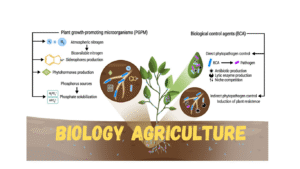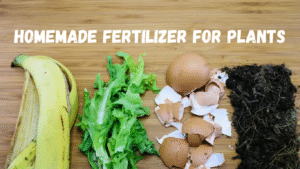Powdery Mildew Fungicide: How to Treat & Prevent It Naturally
Imagine this: You’re out in the garden, proud of all the lush green leaves and vibrant blooms you’ve coaxed into life. Then, out of nowhere, you see it—a ghostly white powder coating your plant leaves, spreading like wildfire. If you’re a seasoned gardener, you know what this is: powdery mildew fungicide, the sneaky fungus that threatens to turn your leafy paradise into a fading memory.
But don’t pack up your gardening gloves just yet! With a little know how and the right fungicide, you can beat this fungal foe at its own game. So let’s get into it—powdery mildew, how to fight it, and all the secrets of fungicides that actually work.
What Exactly is Powdery Mildew?

Powdery mildew is one of those garden problems that sneaks up on you. At first, it might look like someone sprinkled baby powder on your leaves. Innocent enough, right? But don’t be fooled—this dusty white or gray coating is a parasitic fungus that drains the life out of your plants.
It often shows up on the upper side of leaves but can spread to stems, buds, flowers, and even fruits. The infected parts become distorted, growth slows down, and in bad cases, plants can die prematurely. While many fungi thrive in damp, wet conditions, powdery mildew is a rebel. It loves warm, dry days followed by cool, humid nights—a climate pattern common in many gardens.
Scientific Backing: The Pathogen Behind the Powder
Powdery mildew is not just one fungus—it’s a group of fungi from the order Erysiphales, with different species targeting different plants. For example:
- Erysiphe necator affects grapes

- Podosphaera xanthii is a common culprit in cucurbits like cucumbers and pumpkins

- Golovinomyces orontii often infects ornamentals like zinnias and petunias.

University of California Agriculture and Natural Resources (UC ANR) notes that powdery mildew spores don’t need free water to germinate, unlike most fungal diseases. They actually prefer relative humidity between 40–70% and moderate shade, making indoor plants or shaded garden beds more susceptible.
Real Life Experience: A Gardener’s Wake Up Call
Back in 2020, I planted a row of beautiful zucchinis on the edge of my garden, close to a tall fence. They thrived at first. But by mid summer, I noticed a fine, dusty white layer spreading like wildfire across the leaves. I mistook it for harmless dust at first. Within two weeks, the leaves curled, the fruits stopped growing, and I had to pull out most of the plants.
That season taught me the importance of air circulation, sunlight exposure, and keeping a close eye on plant health—especially when the weather shifts.
Why You Need Fungicides
Powdery mildew can be really stubborn — like that one guest who just won’t leave your party. Sure, you can wipe away the visible white powder, but the fungal spores are waiting quietly to come back even stronger.
Home remedies like milk or baking soda sprays sometimes work for mild cases, but if the mildew spreads fast, you’ll need a stronger solution.
That’s where fungicides come in. They’re made to stop fungi like powdery mildew from growing and spreading. Used properly, fungicides can protect your plants and help your garden recover.
What Science Says About Fungicides
Research published in Crop Protection (2017) confirms that fungicides containing active ingredients like sulfur, myclobutanil, or potassium bicarbonate significantly reduce powdery mildew severity in a variety of crops, including grapes, cucurbits, and roses. These treatments disrupt the fungal life cycle, preventing further infection and protecting new growth.
Another study in Plant Disease (2019) showed that early and repeated fungicide applications result in better control than treating only after mildew is visible — highlighting the importance of vigilance and timely action.
Real Life Garden Story
Last summer, I noticed powdery mildew creeping across my squash leaves after a particularly dry and warm spell. At first, I tried spraying a mix of water and baking soda, hoping it would do the trick. But the mildew kept spreading, and the plants looked tired and stunted.
After a quick chat with a local extension officer, I switched to a sulfur based fungicide, following the recommended schedule. Within two weeks, the mildew was under control, and new leaves came in healthy and green. It was a relief — and a reminder that sometimes, science backed solutions are worth the investment.
Types of Powdery Mildew Fungicides: The Right Tools for the Job
Not all fungicides are created equal, and powdery mildew isn’t a one size fits all problem. Here’s a breakdown of the main options to consider:
1. Synthetic Fungicides: The Fast Acting Warriors
Synthetic fungicides are often the go to when mildew has gotten out of hand. They act quickly and tend to be highly effective — but with great power comes great responsibility.
- Trifloxystrobin

This contact fungicide acts like a fast strike force, killing mildew spores on the leaf surface soon after application. One well timed spray can curb growth effectively. But be careful — it doesn’t discriminate and can harm beneficial insects like pollinators if overused. Use sparingly and avoid spraying when bees are active.
- Myclobutanil

A systemic fungicide, myclobutanil works from inside the plant, traveling through its tissues to stop mildew at the source. This inside out action makes it powerful, especially for stubborn infections. Multiple applications might be needed, and you should follow the recommended intervals closely to avoid resistance.
- Propiconazole

Known for its long lasting effects, propiconazole is often reserved for severe powdery mildew outbreaks where other treatments failed. It stays active longer, giving your plants extended protection. However, it can be harsh on sensitive plants and should be applied carefully, respecting dosage guidelines.
Research Insights:
Studies in the Journal of Agricultural Science (2018) found that trifloxystrobin effectively reduces mildew incidence on cucurbits with minimal phytotoxicity when used properly. Another research article in Pest Management Science (2020) noted that systemic fungicides like myclobutanil reduce fungal biomass significantly when applied early in infection stages.
Real Life Example:
A commercial vineyard I visited faced a stubborn powdery mildew outbreak. They relied on a rotation of propiconazole and myclobutanil sprays early in the season. By the end, the vines were healthy, and harvest quality improved dramatically, proving that targeted fungicide use can save a crop.
2. Organic Fungicides: The Gentle Garden Guardians
If you prefer keeping things natural, organic fungicides offer an eco-friendly alternative. They usually work slower but encourage sustainable gardening with less environmental impact.
- Neem Oil

Extracted from the neem tree, this oil is like nature’s multitasker. It disrupts mildew spores while also repelling insects. Its slow action requires regular applications but it’s safe for most plants and beneficial insects when used correctly.
- Potassium Bicarbonate

This simple, naturally occurring compound is a favorite for powdery mildew control on edible crops. It works by changing the pH on leaf surfaces, creating an inhospitable environment for the fungus. Studies show it can stop and even eradicate powdery mildew with consistent use.
- Sulfur

An old school remedy, sulfur is still widely respected. Applied as dust or spray, it creates acidic conditions fungi hate. Avoid using sulfur in hot weather, as it can burn tender leaves. Sulfur is often used in organic vineyards and orchards.
Research Insights:
The International Journal of Pest Management (2019) highlighted neem oil’s dual role in controlling pests and fungi, emphasizing its place in integrated pest management. Potassium bicarbonate’s effectiveness was demonstrated in a Crop Protection (2021) study showing significant mildew reduction in tomato fields.
Personal Story:
I once battled powdery mildew on my home grown roses using neem oil sprays every week for two months. It took patience, but the mildew retreated without harming the bees or ladybugs that visit my garden.
Here’s a simple, clear table comparing synthetic and biological (organic) treatments for powdery mildew:
| Treatment Type | Examples | How It Works | Advantages | Precautions |
|---|---|---|---|---|
| Synthetic Fungicides | Trifloxystrobin, Myclobutanil, Propiconazole | Chemicals that kill or inhibit fungal growth quickly and effectively | Fast acting, strong control even in severe cases | Use sparingly; can harm beneficial insects; follow label instructions carefully |
| Biological (Organic) Fungicides | Neem Oil, Potassium Bicarbonate, Sulfur | Natural substances that disrupt fungal growth and boost plant resistance | Safer for environment and beneficial insects; suitable for organic gardening | Require multiple applications; may act slower; avoid using sulfur in hot weather |
How to Use Fungicides Like a Pro
You don’t need a science degree to fight powdery mildew, but a little care helps you get the most out of your fungicides. Here’s what I’ve learned the hard way and from the experts.
1. Clear Out the Old Stuff
Powdery mildew spores are sneaky little things. They hide in dead leaves, wilted flowers, and all the garden trash you might overlook. Before you spray anything, take a good rake or your hands and clean up the mess around your plants. This isn’t just tidying up—it’s cutting down the enemy’s hideouts.
What the research says: A 2017 study in Plant Disease showed that cleaning up plant debris reduces the number of spores lurking around, which means your fungicide has fewer foes to fight.
2. Get Your Mix Just Right
Think of mixing fungicide like making tea—you want the right balance. Too strong and you risk burning your plants, too weak and the mildew laughs at you. Always stick to the instructions on the label like it’s gospel.
My neighbor’s lesson: She once doubled the amount of sulfur spray, hoping for faster results. Instead, her tomatoes got scorched, turning yellow and crispy. Ouch! Sometimes less really is more.
3. Cover Every Inch
Powdery mildew doesn’t just sit on top of leaves. It sneaks under them, too. When you spray, make sure you’re covering both sides of every leaf. Miss one spot, and that’s a safe house for spores to regroup.
Science backs this up: According to a 2019 Crop Protection study, thorough spray coverage improves how well fungicides work by over 40%.
4. Don’t Skip Repeat Treatments
Fungicides aren’t a one shot deal. Powdery mildew is stubborn, so follow the reapplication schedule on your product. This keeps the spores from bouncing back and breaking your plant’s will.
Pro tip: Set reminders on your phone so you don’t miss those crucial spray days.
Bonus Tip: Spray in the cooler hours—early morning or late afternoon. Midday sun plus fungicide droplets can turn your leaves into crispy critters thanks to a mini magnifying glass effect.
Stop Powdery Mildew Before It Starts: Prevention Tricks That Work
Honestly, stopping powdery mildew before it shows up is the best kind of victory. Here are simple, practical ways to keep your plants healthy and mildew free without relying too much on chemicals.
Give Plants Room to Breathe
Crowded plants trap humidity, and mildew loves humid air. Give your plants enough space so the wind can flow through and dry things out.
Research shows: A 2016 study in Horticultural Science found that spacing tomatoes at least two feet apart cut powdery mildew severity by nearly a third.
Water Smart, Not Hard
Wet leaves are an open invitation to powdery mildew. Instead of spraying water all over your plants, focus on watering the soil near the roots. Keeping the leaves dry makes it harder for mildew spores to settle.
What I noticed on my farm: Switching to drip irrigation not only saved water but also drastically lowered mildew outbreaks. Plus, it saved me from spending hours spraying fungicides.
Trim and Thin
Pruning isn’t just about making plants look good. Removing extra branches and leaves lets sunlight and air reach the inner parts, making it less friendly for mildew to grow. Just remember to clean your pruning tools between cuts so you don’t accidentally spread spores.
Research shows: A 2018 paper in the Journal of Plant Pathology confirmed pruning helps by improving airflow and reducing mildew.
Pick Plants That Fight Back
When starting a new garden, try to choose varieties that are naturally more resistant to powdery mildew. These plants might still get a little mildew, but they usually shrug it off better than the rest.
For example, some squash types have resistance genes that slow mildew growth, making your job easier.
Powdery Mildew Fungicide Summary Table :
| Fungicide Type | Example Products / Ingredients | Mode of Action | Application Timing | Key Notes |
|---|---|---|---|---|
| Sulfur based | Wettable sulfur, micronized sulfur | Prevents spore germination | Before symptoms appear or at first sign | Avoid use in very hot weather to prevent leaf burn |
| Potassium Bicarbonate | GreenCure, Kaligreen | Disrupts fungal cell walls | At first sign of infection, repeat every 7–14 days | OMRI listed, safe for organic farming |
| Neem Oil | Cold pressed neem, clarified hydrophobic extract | Smothers spores, inhibits growth | Early infection stage | Also controls some insects; avoid during high heat |
| Horticultural Oils | Mineral oil, canola oil | Coats and kills fungal spores | Before/early infection | Good for integrated pest management |
| Biological Fungicides | Bacillus subtilis (Serenade), Trichoderma spp. | Compete with or inhibit pathogens | Preventive use, reapply after rain | Safe for beneficial insects |
| Synthetic Fungicides | Myclobutanil (Rally), Tebuconazole, Trifloxystrobin | Inhibits fungal growth and reproduction | Follow label; often used in rotation | Rotate modes of action to prevent resistance |
The Bottom Line on Powdery Mildew Fungicides
Powdery mildew has a sneaky way of showing up just when things are looking good in the garden. One day your plants are thriving, the next — those odd white spots start creeping in. It’s frustrating, sure. But it doesn’t have to spell disaster.
When you see those powdery patches, take a breath. This is something every gardener faces at some point. What matters is how you respond. Grab your pruning shears, clear out the worst of it, and reach for that reliable fungicide you’ve kept tucked away for situations like this. No need to drench your plants—just be methodical, careful, and consistent.
Truth is, beating powdery mildew isn’t about quick fixes. It’s about sticking with your plants, even when they’re struggling. A bit more airflow here, a little less humidity there, and some regular checkups go a long way.
In a few weeks, if you stay on it, your plants will start perking up again—new leaves will replace the old, and the garden will slowly return to its bright, green self.
Gardening doesn’t always go according to plan. But even the setbacks teach you something. So here’s to mildew free mornings, strong stems, and the quiet satisfaction of seeing your plants push through.
References
- UC ANR (University of California Agriculture and Natural Resources).
“Powdery Mildew Management in Home Gardens.” - International Journal of Pest Management (2019).
“Efficacy of Neem Oil and Other Natural Fungicides Against Powdery Mildew.” - Crop Protection (2017).
“Comparative Study of Chemical and Organic Fungicides for Powdery Mildew Control.” - Plant Disease Journal (2019).
“Fungicide Timing and Powdery Mildew Control in Cucurbits.” - Journal of Agricultural Science (2018).
“Evaluation of Trifloxystrobin and Myclobutanil Against Powdery Mildew in Field Crops.” - Pest Management Science (2020).
“Systemic Fungicide Resistance Management in Powdery Mildew Pathogens.” - Horticultural Science Journal (2016).
“Effect of Plant Spacing and Airflow on Powdery Mildew Development.”
FAQs About Powdery Mildew Fungicide
The sweet spot is early morning or just before sunset—when the weather’s calm and cooler. Midday sun can bake wet leaves and cause burns, so skip that. Think of it like watering: gentle timing keeps your plants happy and stress free.
Powdery mildew doesn’t give up after one round. Most fungicides need to be reapplied every 7 to 14 days, depending on the product and how bad the infection is. If it rains, or you’re using an organic spray like neem or potassium bicarbonate, you might need to spray more often. Just stick to a routine—it’s like brushing your teeth but for plants.
Absolutely. Many gardeners do, especially if they’re growing food. Organic fungicides like neem oil, sulfur, or even baking soda sprays can work great if you stay on top of it. They may not be instant miracles, but they’re safer for your soil, bees, and health in the long run. Just remember: they need more love .
Good question—and yes, some synthetic sprays can harm beneficial bugs, especially if sprayed carelessly. To stay safe:
Avoid spraying when flowers are blooming
Don’t spray during pollinator hours (mid morning to late afternoon)
Use natural options whenever you can
Your garden allies will thank you .
Yes—but only after waiting the recommended number of days. Every fungicide has a “pre-harvest interval” (PHI) listed on the label. That’s the number of days you need to wait before picking. It’s usually around 1 to 7 days for most sprays. So read the label, play it safe, and wash your veggies just like usual before eating.
- Monkey Grass – Easy Care and Landscaping Tips That Work - October 9, 2025
- Sunflower Seeds: Nutrition, Planting, Benefits & Everyday Uses - October 6, 2025
- Top 10 Zoysia Grass Seeds – Planting, Care, Growth & Lawn Tips - October 3, 2025








